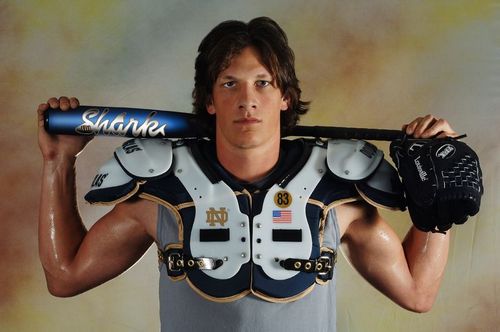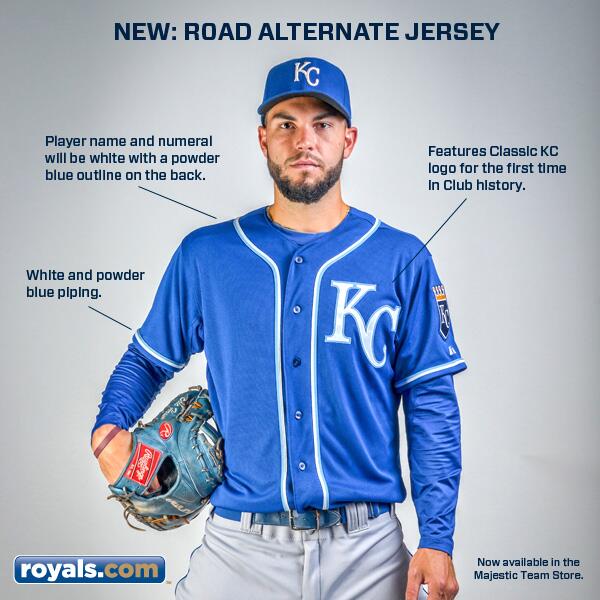The more I think about the Norichika Aoki addition the more I am intrigued by it. One of the things that the Royals did an excellent job of last off-season was better molding their team to Kauffman Stadium than they have done in the past. The Royals front office acquired fly ball oriented pitchers and allowed those arms to take advantage of a fantastic outfield defense.
I've theorized with fellow Royal Revival blogger Twitterless Joe that some teams are doing a better job of playing to their park than others. We both strongly believe this to play a major role in the Athletics resurgence over the last couple of seasons. The optimistic side of me hoped that the Royals were intentionally following a similar path an off-season ago.
The pessimistic side of me wondered if the convergence of a stellar outfield defense and fly ball staff was merely a coincidence. When the Royals opened the 2013-14 off-season with talks about acquiring a middle of the order bat, I was certain that they would undo their progress by putting a lawn chair in right field (albeit one that would theoretically hit 30 home runs and drive in runners, with a .300 OBP). I was dreading the day when the Royals would announce a trade for Mark Trumbo or the signing of Nelson Cruz.
Instead the Royals announced the trade for Aoki. Of course things could change, but I am hopeful that they have acquired him with the intent to play him in right field alongside Lorenzo Cain in center. When you add Alex Gordon to the occasion in left field, you have arguably the best defensive outfield in baseball. (This is a similar strategy to the one deployed by Cleveland last season.) I'd like to think this isn't pure happenstance.
Once upon a time I was given the advice to play to my strengths instead of focusing on improving my weaknesses. The idea being that if you focus too much on a weakness, you end up sacrificing the true potential of your strengths.My hope is that the Royals have adopted this mindset.
Based off the type of player that Aoki is, I theorize that the often muted Royals analytics department might have had a major say in this acquisition. Let's be realistic, does anyone envision Dayton Moore wanting to acquire a high obp, good defender to play a corner? I don't. In fact, this conflicts quite a bit with his past quotes regarding defense up the middle and "run producers" on the corners. This alone tells me that there is someone else in our General Manager's ear in regards to this acquisition.
These thoughts led me to another question: why Aoki?
There are loads of quality defenders that cost little and offer little to no power (the Royals have a few on their roster). There are even some that offer decent on base abilities. So how did the front office land on Aoki? Before I answer this question, let me take a step back and tell you how I spent my three day weekend.
This past weekend I decided to play with some numbers and create a projection engine. I will henceforth refer to it as The Spitter. The general premise behind The Spitter is that it takes a weighted average of a player's batted ball percentages from the last three seasons (55% for last season, 35% for the season before, and 10% for two seasons ago). The Spitter then utilizes Fangraphs' expected BABIP calculator as well as the player's weighted strikeout and walk rates to "spit out" a projection for 2014.
One thing that The Spitter does not consider is aging curves. I did not feel comfortable enough in applying values to aging curves that vary so much on position and player size. This is something I will look into adding to the projections in the future.
Another factor that The Spitter fails to fully recognize are park factors. Since we are dealing with contact rates, a majority of the issues surrounding park factors are mitigated, however, HR/FB is not adjusted and this is a contact rate that would be heavily affected by home park.
Finally, once The Spitter produces a line, it also takes into consideration a player's weighted defensive value over the past three seasons and adjusts a WAR output based on the player's position. The system seems to slant a little on the optimistic side, but I've ran about 45 players through The Spitter so far and there are only a couple of players whose 2014 projection outputs seem to be out of line from their careers.
One of these players is Raul Ibanez, who The Spitter projects to hit 31 home runs and slash .279/.340/.517. This number isn't too out of line to what Ibanez did in 2013, but for a 41 year-old it seems a little ridiculous for his line to continue to improve at this stage of his career. Obviously, this line is the result of 2013 being weighted more heavily than previous years, and the fact that The Spitter isn't considering age curves.
The only other player so far that comes out with a triple slash quite a bit different than what you would expect is Norihicka Aoki. Given the fact that the Royals acquired him just a couple of days before I began work on The Spitter, you can understand why this would intrigue me so much.
I'll just cut to the chase, here is what The Spitter produced for Aoki and 600 plate appearances in 2014:
- .331/.393/.448 with a .371 wOBA and 4.52 WAR.
Now before you click the X in the top right hand corner of the screen, let me remind you that while I believe The Spitter leans on the optimistic side, this is the only output out of 45 that seems at first glance to be an outlier. So the question has to be, what does The Spitter see in Aoki that we have not seen from him in 2 big league seasons?
So first, we have to remember that this line is being driven by weighted batted ball data from Aoki's first two MLB seasons (60% weight for 2013 and 40% for 2012). Using this data, Fangraphs expected BABIP calculator would predict Aoki to post a BABIP of approximately .350, a mark which is 50 points higher than what he has posted for his career.
The reason for the high expected BABIP? Believe it or not it isn't his line drive percentage (which rates slightly below league average), it is actually his propensity to hit ground balls. In fact, since Aoki joined the Major Leagues in 2012, no player has hit a higher percentage of ground balls than his 58.1% mark. Ground balls don't land as hits as often as line drives, but they turn into hits a lot more often than fly balls.
At first glance, one would view Aoki's career BABIP of .300 to be average. However, what we are beginning to find is that BABIP like many other items is driven by batted ball frequencies. So just because Aoki's BABIP is league average, doesn't mean that his BABIP is reflective of where it should be.
Now given the fact that Aoki has struck out just 7.5% of the time in his Major League career (his 5.9% mark in 2013 led baseball), a high BABIP benefits him even more than the average Major League player. What The Spitter highlighted was that based off Aoki's contact rates and extremely low K% he actually presents the Royals with quite a bit more upside than the casual observer would realize.
My guess is that the Kansas City front office is fully aware of all of this. They don't view Aoki as a solid, but unspectacular option. They view Aoki as a guy with a high floor, but with considerable upside thanks to his ability to limit strikeouts and the BABIP issues that we have discussed thanks to his ability to hit the ball on the ground at such a high rate.
The final point goes back to my hope that Kansas City has improved upon its ability to play to Kauffman Stadium. Miller Park allows 98 percent of the singles that a neutral Major League park allows. Kauffman Stadium allows 103 percent of the singles that a neutral park allows. I'm not sure how I could quantify this, but is it possible that the Royals not only see Aoki's high BABIP potential, but that they also see Kauffman as a key ingredient to unlocking that potential?
Unlike The Spitter, I don't expect Norichika Aoki to hit .331 in 2014. However, after looking carefully at the data I do expect progression. The Spitter thinks that based off Aoki's batted ball data, he should be challenging for a batting title. Fortunately, all he needs to do is continue to post his career line of .287/.355/.399 to be valuable. But what if Aoki's line falls somewhere in the middle? How great of a trade would that be for Kansas City?
I don't think all of this is a coincidence. I think that Aoki was identified by someone in the Royals front office and on December 5, Kansas City got their man. Hopefully, for the Royals and their fans The Spitter's projection will prove to be more than numbers on a spreadsheet.
Follow me on Twitter @Landon_Adams.








